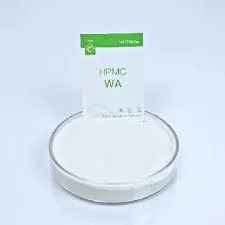
Jul . 27, 2024 11:02 Back to list
Exploring Various Grades of Hydroxypropyl Methylcellulose for Enhanced Performance and Applications
Understanding Different Grades of HPMC and Their Applications
Hydroxypropyl methylcellulose (HPMC) is a versatile cellulose ether that has gained significant attention across various industries due to its unique properties and multifaceted applications. As a non-ionic polymer, HPMC is derived from cellulose, and its modification introduces different functional groups, making it suitable for a wide range of uses. The different grades of HPMC have varying physical and chemical properties, which allow them to cater to specific applications in pharmaceuticals, food preparation, construction, and many other fields.
1. Classification of HPMC Grades
HPMC grades are primarily classified based on two parameters the degree of substitution (DS) and the viscosity of the aqueous solution. The degree of substitution refers to the number of hydroxyl groups in the cellulose molecule that have been replaced with hydroxypropyl and methyl groups. Different grades of HPMC are characterized by different DS values, resulting in diverse performance characteristics, such as solubility, film-forming ability, and gelation.
The viscosity of HPMC varies significantly across its grades, typically categorized as low, medium, and high viscosity. Low-viscosity HPMC is often preferred in applications that require quicker dispersibility and lower thickness, whereas high-viscosity grades are ideal for situations requiring enhanced thickening, stabilizing, or gelling properties.
2. Applications of Different HPMC Grades
different grades of hpmc

In the pharmaceutical industry, HPMC is widely used as a binder and filler in tablet formulations, due to its excellent film-forming properties and compatibility with various active pharmaceutical ingredients (APIs). Low-viscosity grades are commonly applied in immediate-release formulations, while high-viscosity grades are more suitable for sustained-release drug delivery systems. HPMC's use in the preparation of controlled-release formulations significantly enhances the bioavailability of drugs, ensuring consistent and prolonged therapeutic effects.
In the food industry, HPMC serves as a food additive, notably as a thickening agent, emulsifier, and stabilizer. Its varying grades are utilized in sauces, dressings, and bakery products to improve texture and consistency. The ability of HPMC to retain moisture also plays a critical role in extending the shelf life of food products, making it an invaluable component in food technology.
In construction, HPMC grades contribute significantly to the formulation of cementitious materials, tile adhesives, and plasters. The water retention and adhesive properties of HPMC, especially in medium and high viscosity grades, enhance the workability and performance of construction compounds. This application is crucial for ensuring that mixtures can be easily applied and remain viable during the curing process.
Finally, in the cosmetic and personal care sector, various grades of HPMC are utilized for their thickening, emulsifying, and stabilizing properties in lotions, creams, and gels. The ability to form a transparent film makes HPMC an attractive ingredient in many formulations, ensuring effective delivery of active ingredients while maintaining product stability.
3. Conclusion
In summary, HPMC is a unique polymer with a wide array of applications that stem from its varying grades. Its classification based on viscosity and degree of substitution allows it to meet the diverse needs of different industries effectively. As research continues to uncover new applications and enhancements for HPMC, its significance across various fields is set to increase further. Whether in pharmaceuticals, food production, construction, or cosmetics, HPMC plays a fundamental role to ensure product efficacy, stability, and quality. Understanding the differences in HPMC grades is essential for optimizing their use and maximizing their benefits across applications.
-
Versatile Hpmc Uses in Different Industries
NewsJun.19,2025
-
Redispersible Powder's Role in Enhancing Durability of Construction Products
NewsJun.19,2025
-
Hydroxyethyl Cellulose Applications Driving Green Industrial Processes
NewsJun.19,2025
-
Exploring Different Redispersible Polymer Powder
NewsJun.19,2025
-
Choosing the Right Mortar Bonding Agent
NewsJun.19,2025
-
Applications and Significance of China Hpmc in Modern Industries
NewsJun.19,2025







